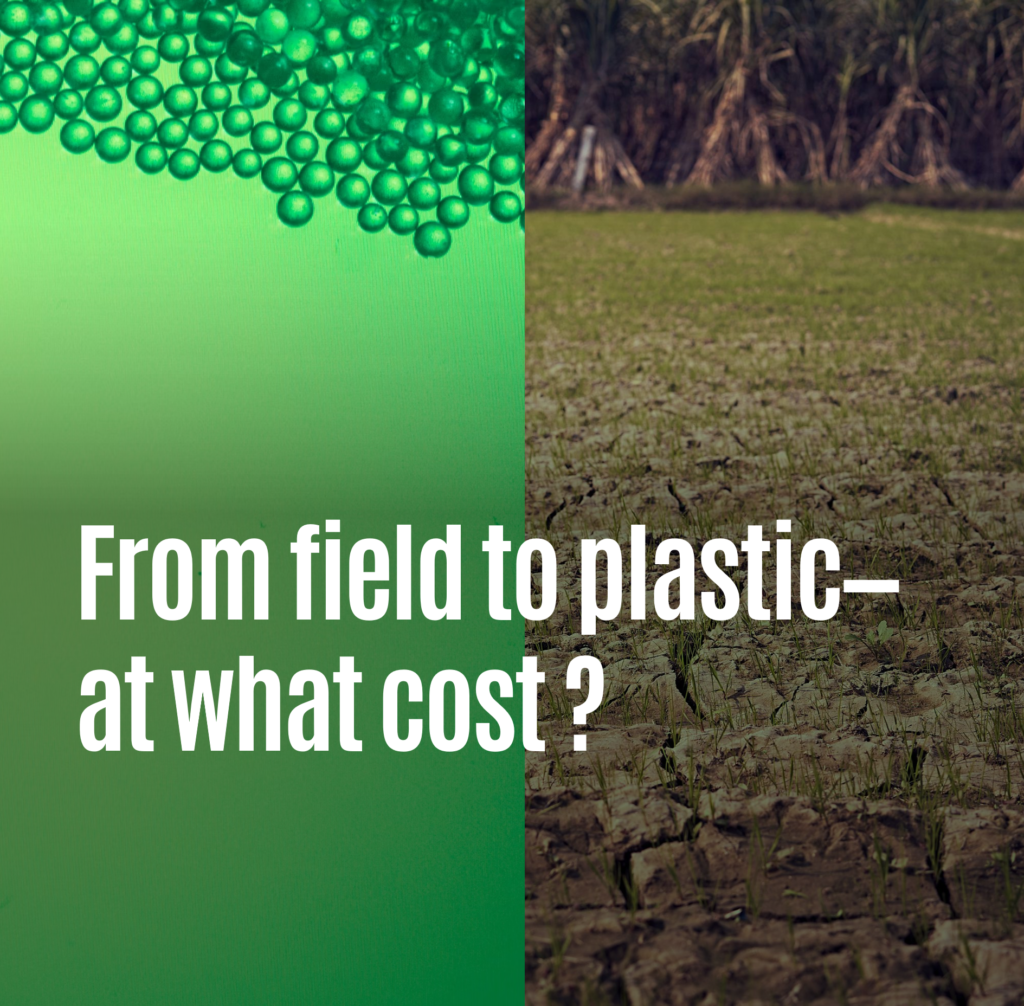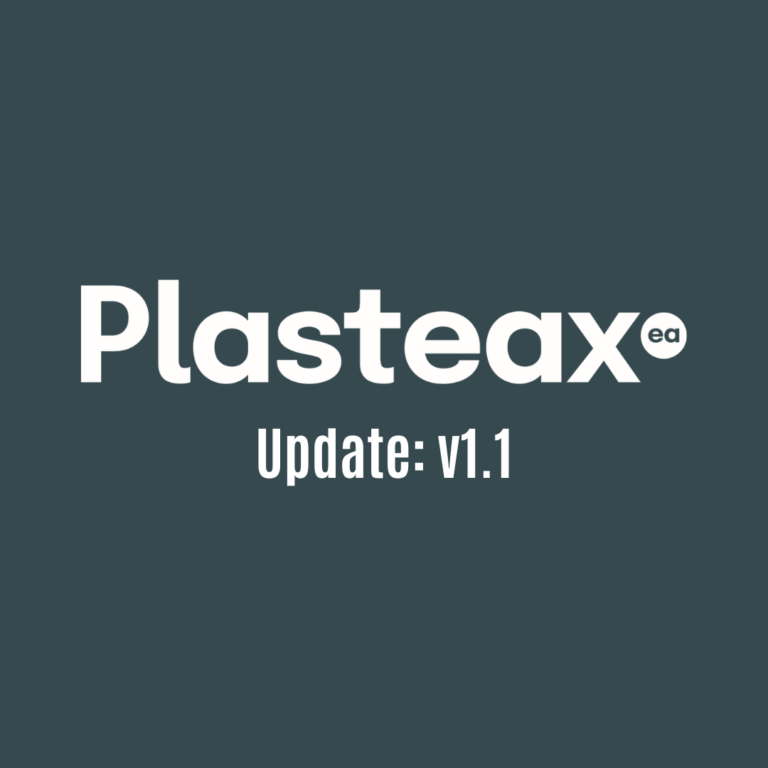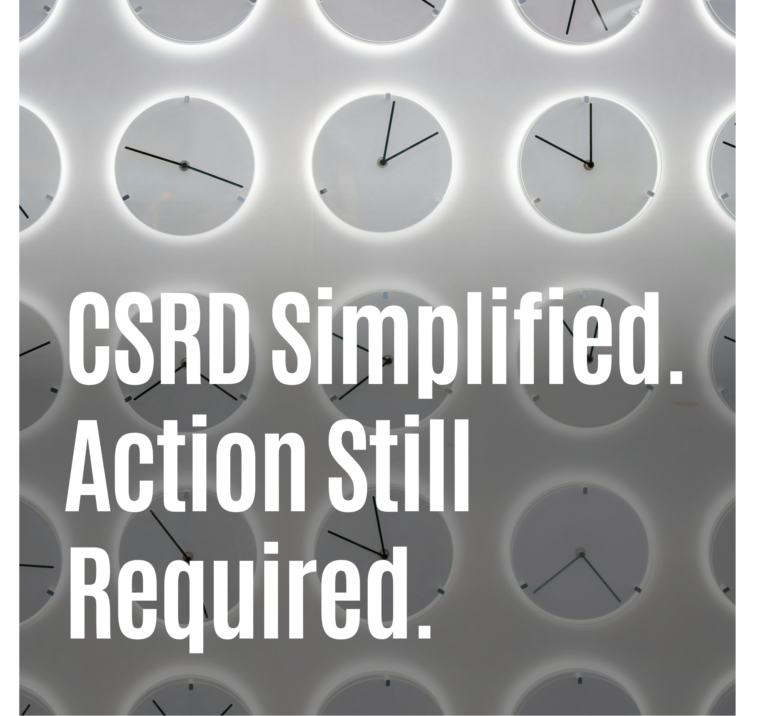When it comes to sustainable packaging, simple substitutions can backfire. That’s why life cycle assessments (LCAs) and holistic frameworks like SPHERE are essential to avoid unintended environmental trade-offs. This blog explores a recent study on bio-based plastics and how SPHERE can help us make smarter, system-aware choices.
In the rush to solve the plastic crisis, many companies are turning to bio-based alternatives. New research published in Nature Sustainability shows that this seemingly straightforward solution could create significant unintended consequences for land use and biodiversity.
The complexity of sustainable packaging
The study, led by researchers from Arizona State University and Vrije Universiteit Amsterdam, shows that switching to bio-based plastics could lead to a 22% increase in cropland expansion, a 35% increase in land intensification, and a 20% increase in deforestation by 2040.
These aren’t just abstract numbers – they represent real impacts on communities and ecosystems.
As we can see in the following graph taken from the report, the areas most affected would be in Asia, Sub-Saharan Africa, and Latin America, where communities often rely directly on local landscapes for subsistence.

Figure taken from the Nature Sustainability paper
In these regions, the push for bio-based plastics could create competition for land in places where people have relatively insecure land rights, potentially leading to displacement.
This study shows the complicated impacts of moving away from plastics without recognizing the effects of substitutes. As lead researcher Levi Helm notes, « You cannot simply replace one product with another. This can undermine progress towards sustainability and enable corporate greenwashing. »
Enter SPHERE – a framework for better decisions
This is precisely why the World Business Council for Sustainable Development (WBCSD) developed the SPHERE framework – an approach to evaluating packaging sustainability that goes beyond simple substitutions.
SPHERE evaluates packaging across six crucial dimensions:
- Climate impact minimization
- Efficiency optimization
- Circularity maximization
- End-of-life management
- Harmful substances avoidance
- Biodiversity impact minimization
SPHERE is designed to go a step further than a footprint calculation and help companies consider multiple environmental factors simultaneously. For bio-based plastics, this means examining not just reduced fossil fuel use, but also land use changes, water consumption, and potential impacts on food security.
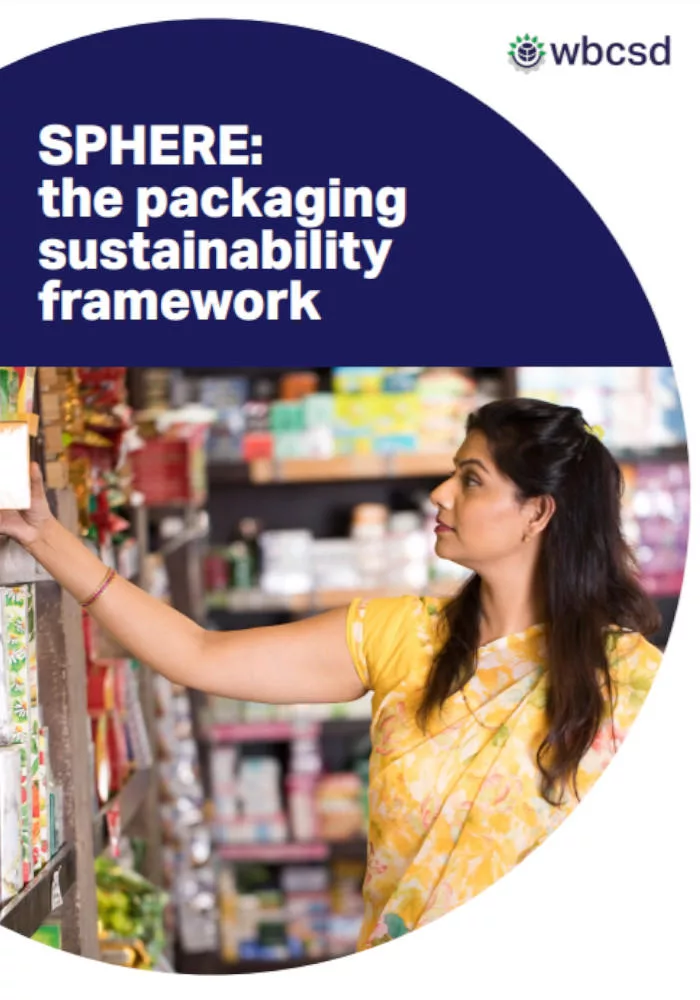
Better decisions with SPHERE in practice
Let’s look at a real case study as an example. This example specifically focuses on paper rather than plastics as described above. Microsoft evaluated three packaging options for their Xbox controller:
- Current retail carton structure
- Retail carton with higher recycled content
- E-commerce single packaging (not palletized) used in delivery
The SPHERE framework revealed key insights across its six principles, and to allow comparability despite different units, the following result are normalised to a 100% scale, where lower percentages represent smaller negative impacts.
Here is an illustration taken from the case study followed by small summaries of what each segment implies:
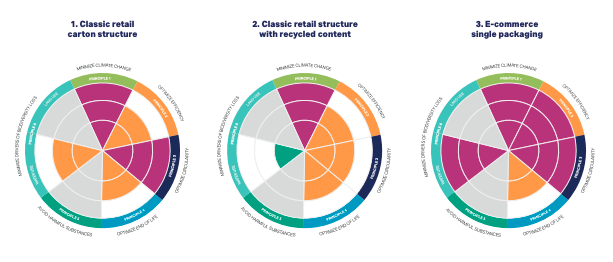
Climate Impact Assessment
Both retail carton options performed similarly, achieving 71% and 80% impact respectively on climate impact metrics (where lower is better). The e-commerce option scored significantly worse at 100%, likely due to less efficient distribution.
Efficiency Optimization
The current retail carton showed the strongest performance at 71%, while the high-recycled content version scored 80%. The e-commerce package performed poorest at 100%, reflecting inefficiencies in single-item shipping.
Circularity
For circularity, perhaps as expected, the high-recycled content option demonstrated clear advantages. It achieved 74% circularity compared to 97% for the standard retail carton (lower scores indicate better circularity). The e-commerce option scored poorest again at 100%.
End-of-Life Management
All options scored the same 100% on end-of-life metrics, suggesting not necessarily bad but comparable recyclability and waste management potential across the designs.
Harmful Substances
It was determined that none of the options contained ‘chemicals of concern’ and so this was not measured.
Biodiversity Impact
Loss in water environments
In biodiversity, the recycled content structure did best at 56%, the retail carton structure scored 77%, and again the e-commerce single packaging scored 100%.
Loss in terrestrial environments
It was determined that none of the options would have an impact on biodiversity loss in land use, so this data wasn’t presented.
Case study conclusion
All in all, the case shows that the retail carton with higher recycled content offered the best overall environmental performance, despite having a slightly worse climate impact and efficiency than the current design, because the recycled content structure scored significantly better in circularity and avoiding biodiversity loss.
Importantly, the analysis showed that the e-commerce single package consistently performed worst across most metrics, suggesting that optimizing packaging for retail distribution might be more sustainable than single-item shipping options. The case study and more are available in the SPHERE framework’s documentation for you to read through in more detail if you’d like.
Relevance to bio-based plastic alternatives
Just as the Microsoft case reveals unexpected trade-offs between the relatively simple problem of recycled content and efficiency, the recent Nature Sustainability research shows similar complexities with bio-based materials.
Where a simple carbon or plastic footprint analysis might favor bio-based alternatives, SPHERE’s comprehensive framework would flag potential land-use impacts – like the projected 22% increase in cropland expansion and 35% increase in land intensification.
The Microsoft case demonstrates how SPHERE can reveal hidden environmental costs in seemingly straightforward substitutions. Similarly, when evaluating bio-based plastics, SPHERE can help look beyond carbon reduction to consider impacts on biodiversity, local communities, and food security.
Looking Forward
The Nature Sustainability research concludes that « decreasing plastic demand and production may prove a less risky strategy to mitigate the impacts of plastics. »
This aligns with SPHERE’s approach of considering multiple environmental impacts rather than focusing on single-solution strategies.
For companies serious about sustainable packaging, the message is clear: we need comprehensive assessment tools that capture the full complexity of packaging decisions.
The SPHERE framework provides exactly this kind of holistic lens, helping businesses navigate the complex trade-offs inherent in packaging sustainability.
By applying life cycle thinking through tools like SPHERE, we can move beyond good intentions and toward genuinely sustainable packaging decisions.
As we move forward in addressing the plastic crisis, tools like SPHERE become increasingly valuable. They help ensure that in our rush to solve immediate problems, we don’t create new ones for future generations to tackle.
Get in touch with us here at EA if you want to learn more about SPHERE or want help conducting a similar analysis for your own packaging. contact@e-a.earth.
